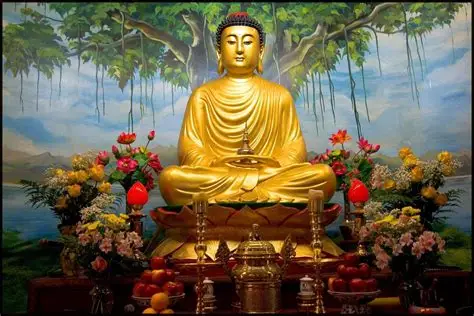India, the birthplace of Buddhism, is home to some of the most revered and historically significant Buddhist sites in the world. Popular Buddhist destinations in India attract millions of pilgrims, monks, scholars, and travelers each year who seek spiritual insight, cultural immersion, and a deeper connection to the teachings of the Buddha.
This guide explores the most iconic and meaningful Buddhist destinations across India—each offering a unique window into the life of Siddhartha Gautama and the evolution of Buddhism over centuries.
1. Bodh Gaya, Bihar – The Seat of Enlightenment
Bodh Gaya is the most sacred Buddhist site in the world. It is here, under the Bodhi Tree, that Prince Siddhartha attained enlightenment and became the Buddha.
Key attractions:
- Mahabodhi Temple: A UNESCO World Heritage Site with a towering spire and sacred Bodhi Tree.
- Bodhi Tree: A direct descendant of the original tree under which Buddha meditated.
- Vajrasana (Diamond Throne): The exact spot where enlightenment occurred.
- International Monasteries: Built by countries like Thailand, Bhutan, and Japan, showcasing diverse Buddhist architecture.
Bodh Gaya is the spiritual heart of Buddhist India and a must-visit for every pilgrim and seeker.
2. Sarnath, Uttar Pradesh – The First Sermon
Located near Varanasi, Sarnath is where Buddha delivered his first sermon after attaining enlightenment, setting the Wheel of Dharma in motion.
Highlights:
- Dhamek Stupa: Built by Emperor Ashoka to commemorate the first sermon.
- Chaukhandi Stupa: Marks the spot where Buddha met his first disciples.
- Mulagandha Kuti Vihar: A modern temple with beautiful frescoes and a Bodhi Tree sapling.
- Sarnath Museum: Home to the Lion Capital of Ashoka, India’s national emblem.
Sarnath is a serene and scholarly destination, ideal for reflection and learning.
3. Kushinagar, Uttar Pradesh – The Mahaparinirvana
Kushinagar is the place where Buddha attained Mahaparinirvana (final liberation) after his earthly life.
Top sites:
- Mahaparinirvana Temple: Houses a reclining statue of Buddha.
- Ramabhar Stupa: The cremation site of the Buddha.
- Matha Kuar Shrine: Believed to be the last resting place of the Buddha.
- Wat Thai Temple: A peaceful Thai-style monastery.
Kushinagar is a deeply spiritual site, often included in Buddhist pilgrimage circuits.
4. Lumbini (Nepal) – The Birthplace of Buddha
Though located in Nepal, Lumbini is an essential part of the Buddhist circuit and easily accessible from India.
Key attractions:
- Maya Devi Temple: Marks the exact birthplace of Siddhartha Gautama.
- Ashokan Pillar: Erected by Emperor Ashoka in 249 BCE.
- Sacred Garden and Monastic Zone: Home to monasteries built by Buddhist nations worldwide.
Lumbini is often paired with Indian destinations in extended Buddhist tours.
5. Rajgir and Nalanda, Bihar – The Seat of Wisdom
Rajgir was one of Buddha’s favorite retreats and the site of many important teachings. Nearby Nalanda was an ancient center of Buddhist learning.
Rajgir highlights:
- Vulture’s Peak (Griddhakuta): Where Buddha delivered the Lotus Sutra.
- Japanese Peace Pagoda: Offers panoramic views and spiritual ambiance.
- Hot Springs: Believed to have healing properties.
Nalanda highlights:
- Nalanda University Ruins: A UNESCO World Heritage Site and one of the world’s oldest universities.
- Nalanda Archaeological Museum: Houses ancient manuscripts and sculptures.
These sites are ideal for those interested in Buddhist philosophy and history.
6. Shravasti, Uttar Pradesh – The Miracle City
Shravasti was one of the Buddha’s most frequented places during his monastic life and the site of many miracles.
Must-see spots:
- Jetavana Monastery: Where Buddha spent 24 rainy seasons.
- Ananda Bodhi Tree: Planted by Ananda, Buddha’s disciple.
- Pakki Kuti and Kachchi Kuti: Ancient stupas and ruins.
- Thai and Sri Lankan Monasteries: Peaceful spaces for meditation and study.
Shravasti is a quiet, contemplative destination with deep spiritual resonance.
7. Sanchi, Madhya Pradesh – The Stupa Legacy
Sanchi is home to some of the oldest and most beautifully preserved Buddhist stupas in India.
Key attractions:
- Great Stupa: Built by Ashoka in the 3rd century BCE, adorned with intricate gateways.
- Ashokan Pillar: With inscriptions and a lion capital.
- Sanchi Museum: Displays relics, sculptures, and artifacts.
- Other Stupas and Monasteries: Spread across the hilltop complex.
Sanchi is a UNESCO World Heritage Site and a masterpiece of Buddhist art and architecture.
8. Tawang, Arunachal Pradesh – The Himalayan Monastic Jewel
Tawang is home to the largest Buddhist monastery in India and offers a unique blend of Tibetan culture and Himalayan beauty.
Highlights:
- Tawang Monastery: A 17th-century monastery with over 400 monks.
- Urgelling Monastery: Birthplace of the 6th Dalai Lama.
- Tawang War Memorial: Honoring soldiers and offering panoramic views.
Tawang is a remote yet spiritually rich destination for those seeking solitude and authenticity.
9. Leh, Ladakh – The Land of Lamas
Ladakh is dotted with ancient monasteries, stupas, and prayer flags fluttering against dramatic mountain backdrops.
Top monasteries:
- Hemis Monastery: The largest and wealthiest in Ladakh.
- Thiksey Monastery: Resembling the Potala Palace in Lhasa.
- Diskit Monastery: Overlooking the Nubra Valley with a giant Maitreya Buddha statue.
- Alchi Monastery: Known for its Kashmiri-style murals.
Leh is a spiritual and scenic highlight of Buddhist India.
10. Rumtek Monastery, Sikkim – The Dharma Chakra Center
Located near Gangtok, Rumtek is the seat of the Karmapa and a major center of Tibetan Buddhism.
Why visit:
- Rumtek Monastery: A replica of the original monastery in Tibet.
- Golden Stupa: Contains relics of the 16th Karmapa.
- Prayer Halls and Murals: Rich in symbolism and artistry.
Rumtek is a serene and spiritually charged destination in Northeast India.
11. Dehradun – Mindrolling Monastery
Mindrolling Monastery is one of the largest Buddhist centers in India, located in Clement Town near Dehradun.
Features:
- Great Stupa: One of the tallest in Asia.
- Ngagyur Nyingma College: A center for advanced Buddhist studies.
- Lush Gardens and Murals: Ideal for meditation and photography.
Mindrolling is a modern yet deeply spiritual destination for Buddhist practitioners.
12. Vaishali, Bihar – The Site of the First Buddhist Council
Vaishali is where Buddha gave his last sermon and where the Second Buddhist Council was held.
Key sites:
- Ashokan Pillar: With a single lion capital.
- Relic Stupa: Said to contain Buddha’s ashes.
- World Peace Pagoda: Built by Japanese Buddhists.
Vaishali is a historically significant stop on the Buddhist trail.
13. Coorg, Karnataka – The Golden Temple
Namdroling Monastery, also known as the Golden Temple, is a vibrant Tibetan Buddhist center in South India.
Highlights:
- Golden Buddha Statues: Towering figures of Padmasambhava, Amitayus, and Buddha Shakyamuni.
- Tibetan Architecture and Art: Intricate murals and prayer halls.
- Monastic Life: Home to over 5,000 monks and nuns.
Coorg offers a unique blend of coffee plantations and Buddhist spirituality.
Final Thoughts
Popular Buddhist destinations in India are more than just travel spots—they are living testaments to a philosophy that has shaped civilizations and touched millions of lives. Whether you’re meditating under the Bodhi Tree, walking through the ruins of Nalanda, or listening to chants in a Himalayan monastery, each site offers a chance to connect with the timeless teachings of the Buddha.
So pack your bags—or your intentions—and embark on a journey that’s as much inward as it is outward.






Leave a Reply